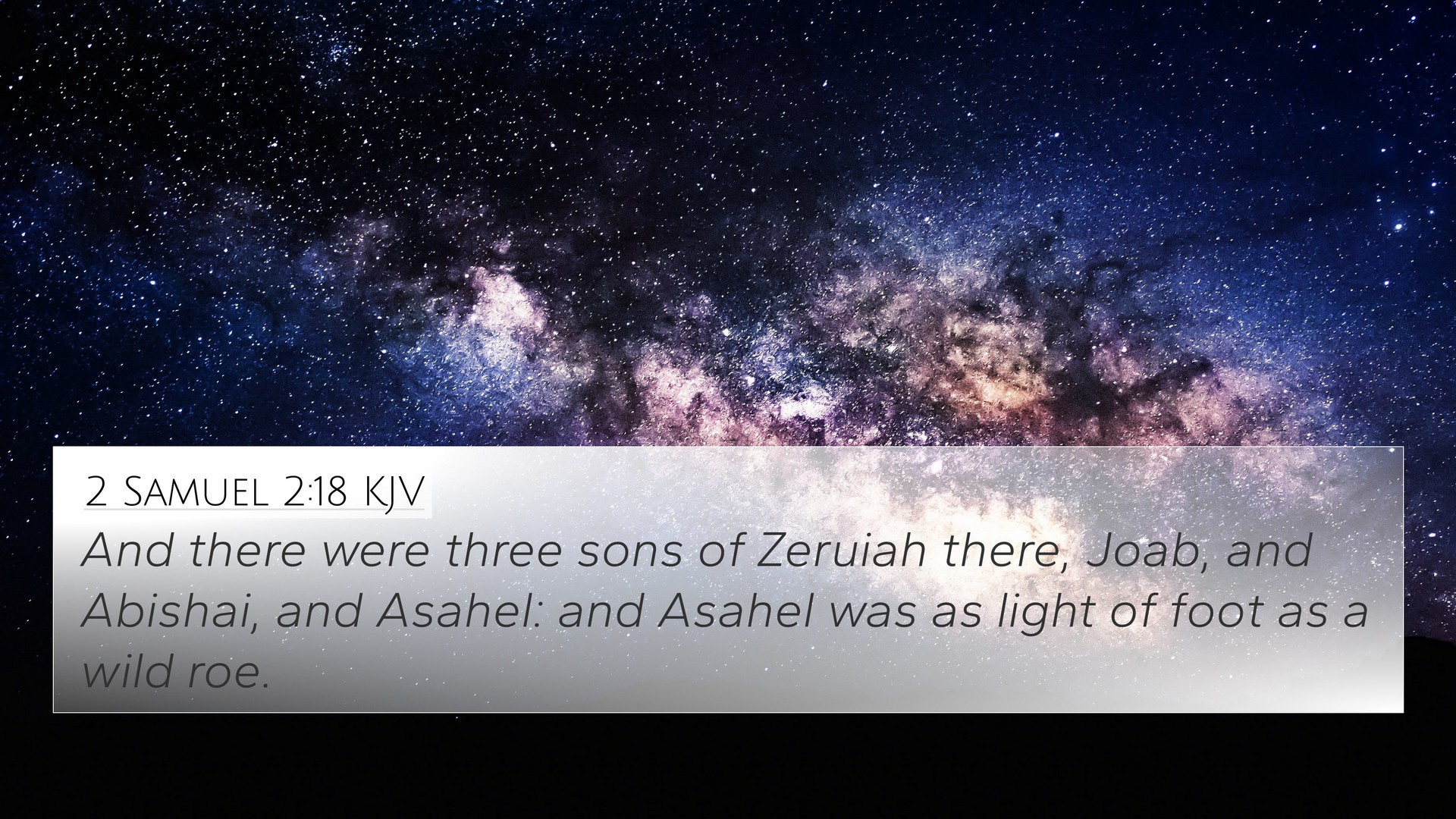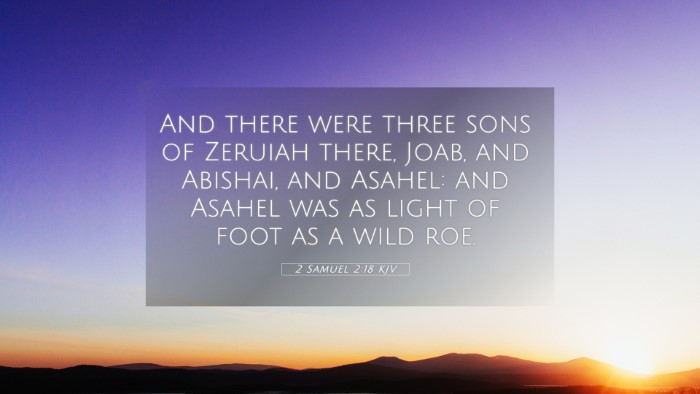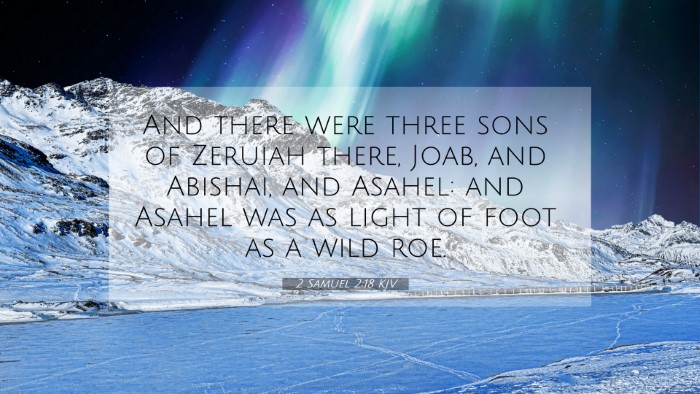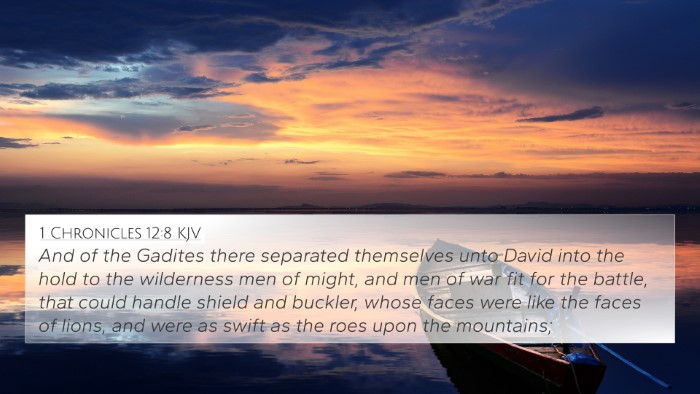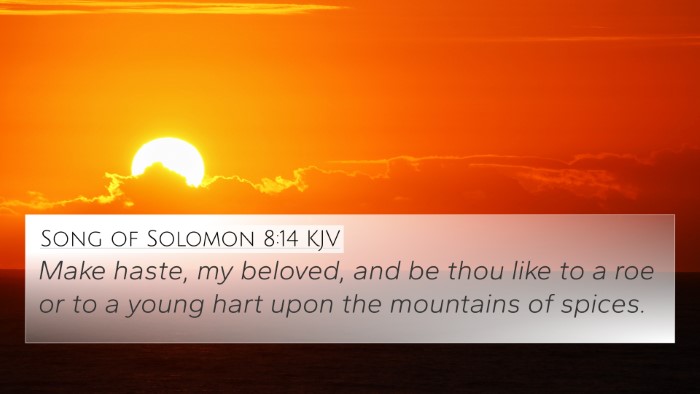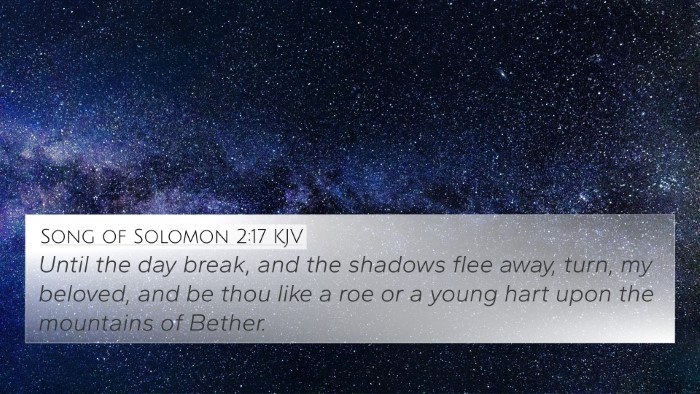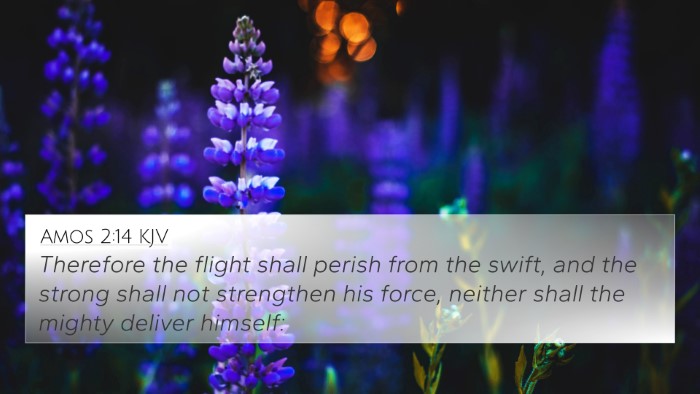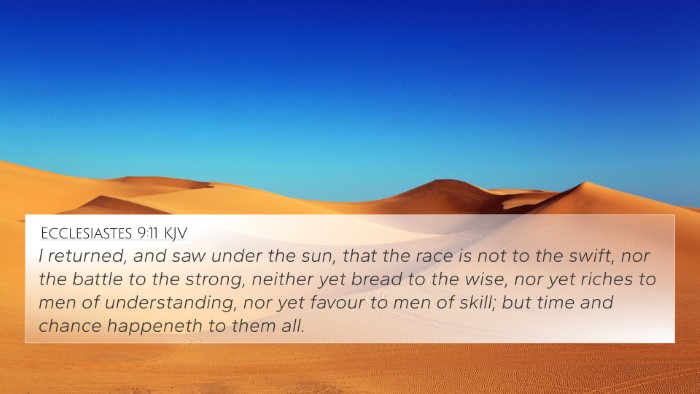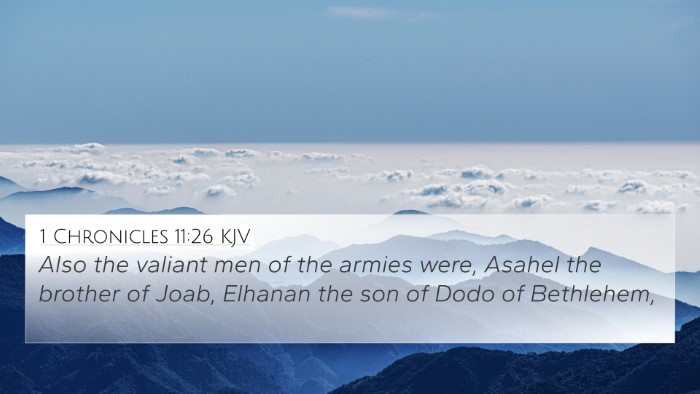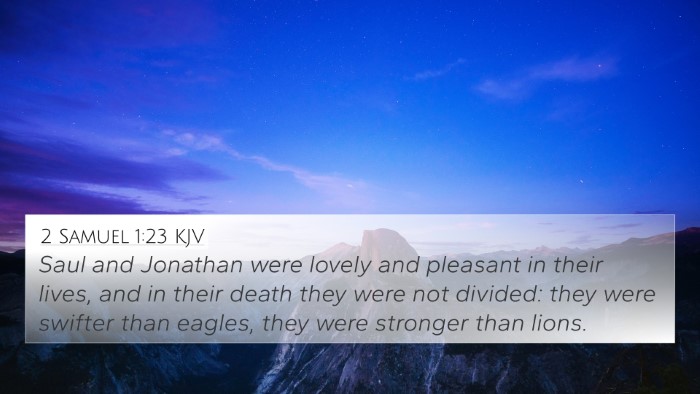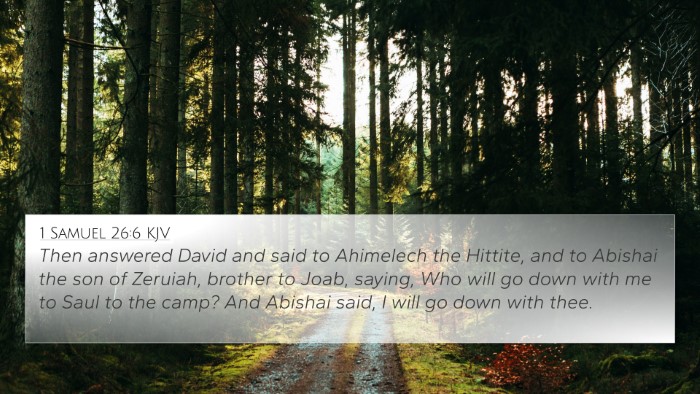Understanding 2 Samuel 2:18
Verse: "And there were three sons of Zeruiah there, Joab, and Abishai, and Asahel: and Asahel was as light of foot as a wild roe." (2 Samuel 2:18)
Summary of the Verse
This verse introduces the three sons of Zeruiah, who play significant roles in the narrative of David's rise to kingship and the ensuing conflicts during this tumultuous time in Israel's history. Asahel, noted for his extraordinary speed, is particularly highlighted, symbolizing youthfulness, agility, and determination.
Commentary Insights
- Matthew Henry: Henry observes that the mention of Asahel's swiftness draws attention to his character and foreshadows the dangers associated with such qualities in conflict scenarios. His speed, while an advantage, also leads to rashness, particularly in battle.
- Albert Barnes: Barnes emphasizes the familial connection, noting how Joab, Abishai, and Asahel represent different responses to leadership and conflict. The inclusion of Asahel’s swiftness serves not only as an impressive trait but a narrative device foreshadowing his fate.
- Adam Clarke: Clarke reflects on the metaphor of the "wild roe," indicating Asahel's exceptional capabilities. He further discusses how the traits exhibited by the brothers set the stage for divisions and struggles among David's followers, illustrating the consequences of personal attributes in group dynamics.
Thematic Connections and Cross-References
This verse can be linked to several other scriptures, highlighting various themes of agility, conflict, and familial loyalty:
- 1 Chronicles 2:16: This verse also mentions David’s mighty men, indicating the significance of family ties in leadership.
- 2 Samuel 3:30: The conflict and actions of Joab are further expanded here, showcasing the rivalry among David's supporters.
- Proverbs 1:18: This verse speaks to the dangers of the reckless ambitions represented in Asahel, suggesting parallels between swiftness and folly.
- Hebrews 12:1: The imagery of running the race can be considered an echo of Asahel’s remarked swiftness, urging readers to pursue faith with determination.
- 1 Samuel 17:40: David’s preparation for battle against Goliath with speed and skill can be contrasted with Asahel’s character, further linking themes of youthfulness and readiness for conflict.
- Ecclesiastes 9:11: This verse highlights the unpredictability of time and chance in human efforts, which can resonate with Asahel’s fate in battle.
- Luke 9:62: The call to not look back can connect with Asahel’s determination to advance, even into dangerous situations.
Importance of Cross-Referencing in Biblical Studies
Cross-referencing Bible verses enhances understanding by uncovering layers of meaning and relational dynamics throughout the scriptures. Here are some benefits:
- Deeper Understanding: By identifying connections between Bible verses, readers can gain insights that enrich their interpretation and application of the text.
- Thematic Coherence: Linking scripture reveals thematic continuity across both the Old and New Testaments, promoting a holistic view of the biblical narrative.
- Practical Application: Understanding how different passages relate can lead to significant personal and communal insights, fostering growth in faith.
- Inter-Biblical Dialogue: This scholarly approach allows readers to engage in an ongoing conversation through the texts, recognizing how themes resound across history.
Tools and Methods for Cross-Referencing
For anyone looking to explore connections between scripture, the following tools and methods can be invaluable:
- Bible Concordance: A tool that lists words and phrases in the Bible, helping to locate related verses.
- Cross-Reference Bible Study: Techniques that explore how verses inform and correlate with one another.
- Bible Reference Resources: Use comprehensive guides and tools that systematically link scripture passages.
- Comparative Bible Verse Analysis: Engage in analytical study by comparing verses side by side to unveil contrasts and agreements.
- Chain References System: This method helps one follow a thematic pathway through various scripture connections.
Conclusion
2 Samuel 2:18 is more than just a historical reference; it encapsulates themes of conflict, familial loyalty, and the intricate dynamics within David's narrative. By employing strategies for cross-referencing, readers can navigate the Bible's rich tapestry, uncover deep connections, and enhance their spiritual understanding.
